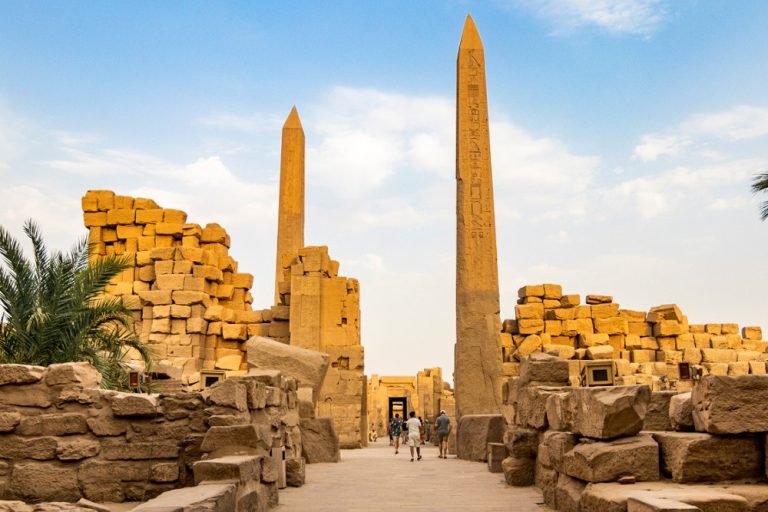Tutankhamun Legacy
Luxor Tomb & Cairo’s Grand Egyptian Museum
Explore a story that has intrigued people for over a century: the legacy of Tutankhamun, Egypt’s young king. His tomb in Luxor and treasures in Cairo’s Grand Egyptian Museum attract millions. Imagine the moment in 1922 when Howard Carter looked through a small opening in the Valley of the Kings and said, “Yes, wonderful things.” This discovery turned Tutankhamun from a forgotten pharaoh into a global icon, sparking “Tutmania” worldwide and changing archaeology forever. Today, visitors can follow his journey in two key places: the tomb where he was buried and the museum that holds his golden mask, chariots, and thousands of artifacts, all preserved with modern technology. Tutankhamun’s story is not just ancient history; it connects Egypt’s past with its present, inviting everyone to experience the amazing world of the boy king.
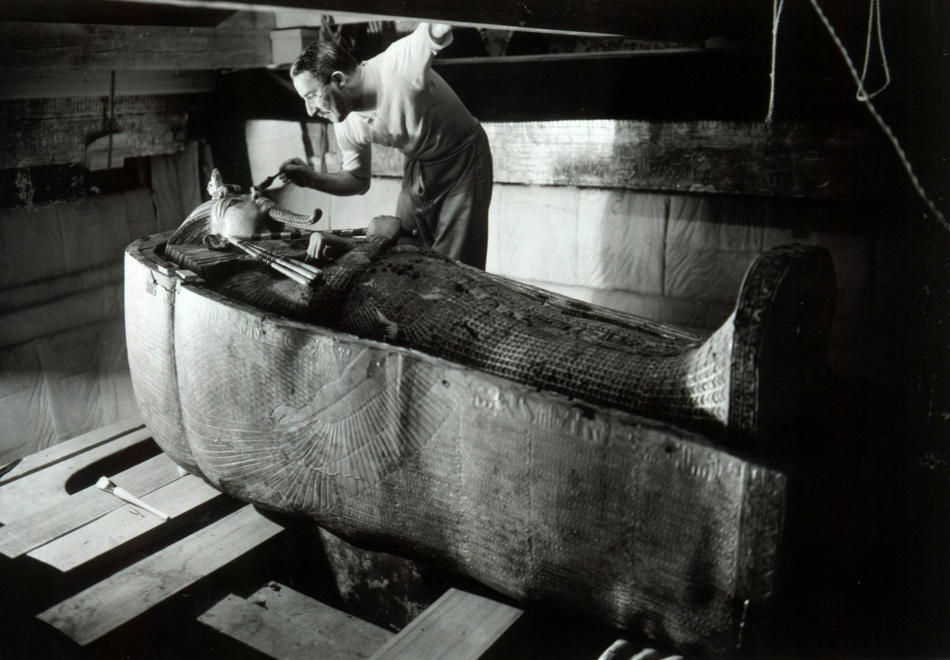
The Discovery in Luxor: Howard Carter’s Breakthrough
In 1922, British archaeologist Howard Carter discovered the famous tomb of Tutankhamun in Egypt. It was hidden under sand and rubble in the Valley of the Kings and contained many amazing artifacts.
This discovery was significant for archaeology. It was the first time that the world saw an almost untouched royal tomb with its original contents. Luxor became known for Tutankhamun, and the Valley of the Kings gained a reputation as a key destination for those interested in Egypt’s ancient history.
Luxor Tours & Activities
Looking to save some costs on your travel? Why not join a shared group tour to explore Luxor, Egypt? Here are some activities you might be interested in:
Tutankhamun’s Legacy in Egyptian Culture
Tutankhamun was a young pharaoh with a short reign, but his impact on Egypt remains significant. The discovery of his tomb turned him from a little-known leader into a famous symbol of ancient Egypt.
He represents national pride, showcasing Egypt’s rich history. His tomb in Luxor’s Valley of the Kings attracted many visitors who wanted to see the boy king’s resting place.
The “curse of the pharaohs” spawned stories that deepened the mystery, increasing public interest. For Egyptians, Tutankhamun stands for strength and continuity. His legacy includes not just gold and artifacts, but also Egypt’s important role as a center of civilization.
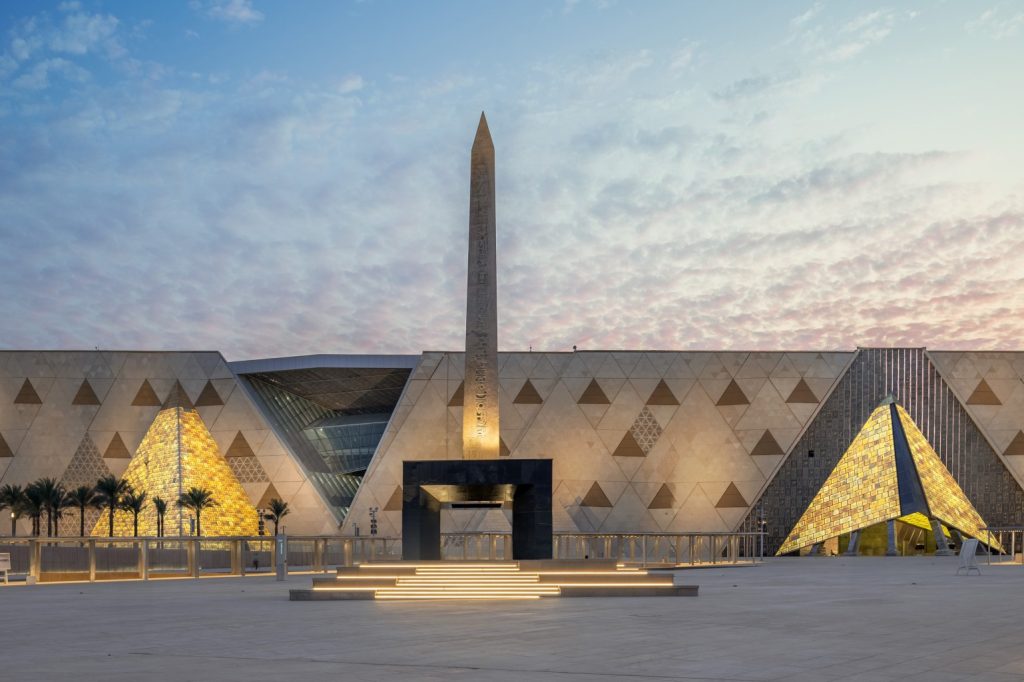
Cairo’s Grand Egyptian Museum: A Modern Home for Ancient Treasures
Luxor has preserved Tutankhamun’s tomb, but Cairo’s Grand Egyptian Museum (GEM) is the best place to see his treasures. Located near the Giza pyramids, GEM is the largest archaeological museum in the world. It houses over 100,000 artifacts from Egypt’s history.
The standout feature is the Tutankhamun galleries, which bring together all 5,398 objects from his tomb for the first time since Carter found them. Visitors can explore the complete collection in two dedicated halls, which use modern technology and conservation methods.
The museum focuses on storytelling. Visitors walk through engaging galleries that place the artifacts in context, combining archaeology with modern display techniques. GEM is more than just a museum; it is a cultural landmark that changes how Egypt shares its heritage with the world.
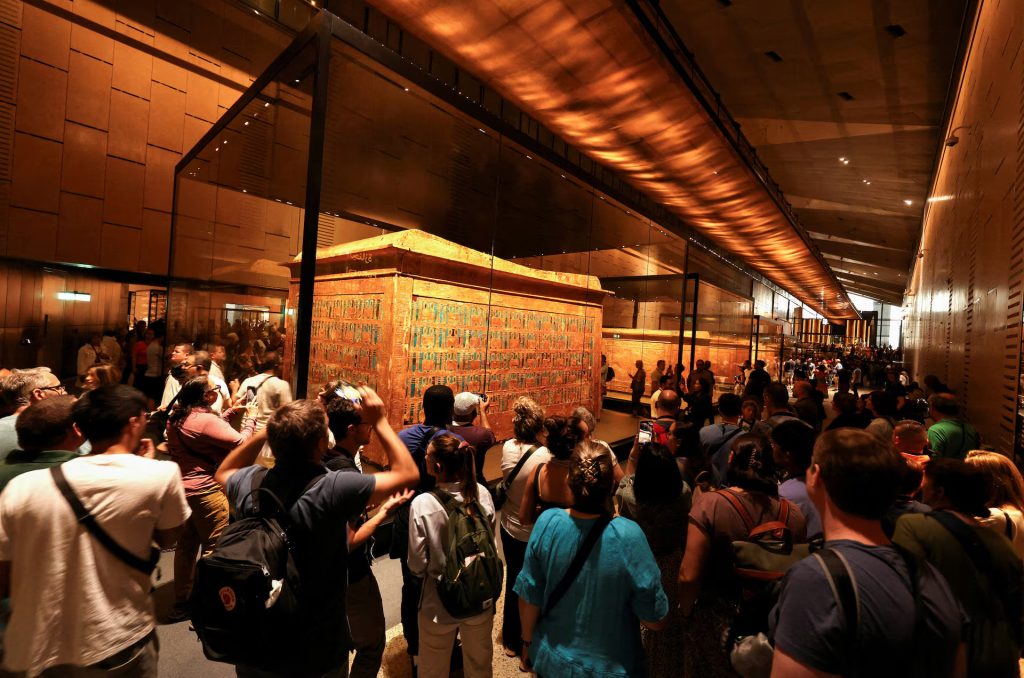
The Scale of the Collection
The galleries occupy two vast halls within GEM, designed to immerse visitors in Tutankhamun’s world. Highlights include:
Golden burial mask: The iconic symbol of ancient Egypt, restored and displayed with precision lighting.
Golden coffins: Nested coffins that protected the pharaoh’s body, each more elaborate than the last.

Chariots and weaponry: Evidence of royal ceremony and military symbolism.
Royal jewelry: Amulets, necklaces, and diadems showcasing exquisite craftsmanship.
Everyday objects: From board games to clothing, these items humanize the boy king.
Unique shield of textile and leather: A rare artifact in Egyptian civilization, highlighting innovation in materials.
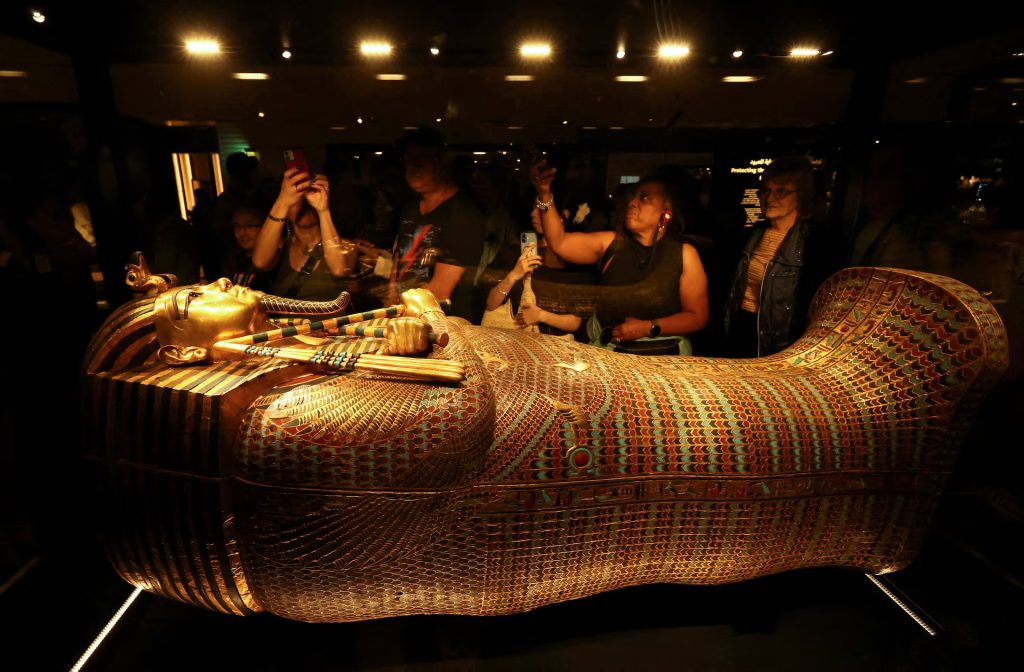
Storytelling Through Design
The galleries are not just about artifacts—they are about narrative. Curators have arranged the halls to tell the story of Tutankhamun’s life, reign, and afterlife journey. Visitors move through thematic sections:
Royal childhood: Toys, clothing, and personal items reveal the human side of the young pharaoh.
Pharaonic power: Thrones, regalia, and ceremonial objects emphasize his divine authority.

Journey to the afterlife: Funerary items, coffins, and the golden mask illustrate beliefs about immortality.
This storytelling approach transforms the galleries into an immersive experience, blending archaeology with cultural interpretation.
![[KV62] Tutankhamen Tomb](https://exploreluxor.org/wp-content/uploads/2024/11/Tutankhamen-tomb-1024x683.jpg)
Visitor Experience: Luxor Tomb and GEM in Cairo
Travelers can experience Tutankhamun’s legacy by visiting Luxor and Cairo. Each place offers a unique view.
Luxor Tomb Experience
– Atmosphere: The Valley of the Kings feels like stepping back in time. The tomb’s walls have bright paintings that tell the story of the afterlife.
– Family-Friendly Insights: Kids often find the artwork and stories exciting, making it a fun learning experience.
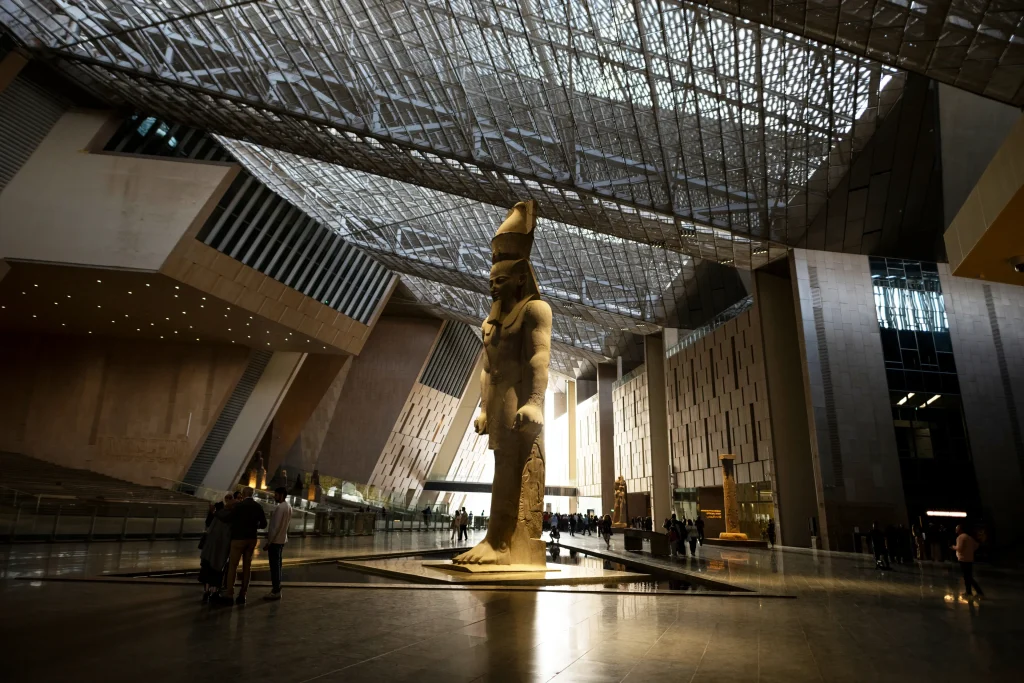
Cairo GEM Experience
– Scale and Design: The museum’s large halls and modern design create a grand feeling.
– Tutankhamun Galleries: This is the main attraction for many visitors, showcasing the treasures of the boy king.
– Accessibility: The GEM is made for international visitors, offering multilingual guides, interactive displays, and family-friendly areas.
Together, Luxor and Cairo provide a complete journey: the tomb where Tutankhamun was buried and the museum that holds his treasures for future generations.
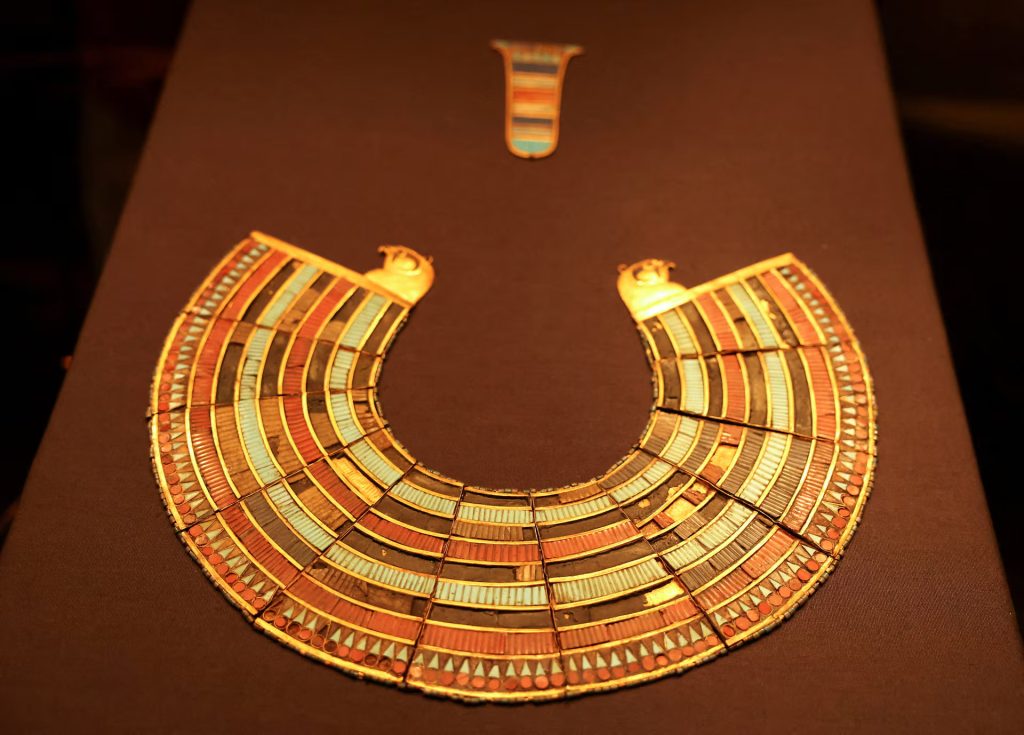
Tutankhamun’s Global Impact
Tutankhamun has a lasting impact that goes beyond Egypt. His legacy has influenced art, science, and cultural connections around the world.
In art and fashion, the discovery of his tomb led to “Tutmania” in the 1920s. This craze affected jewelry, clothing, and design trends.
In science, modern DNA studies and CT scans have provided new insights into Tutankhamun’s health, family background, and possible causes of death.
International exhibitions of his artifacts have attracted millions of visitors, strengthening Egypt’s cultural ties with other countries.
Tutankhamun is more than just a historical figure; he is a global symbol that connects ancient history with modern interest.
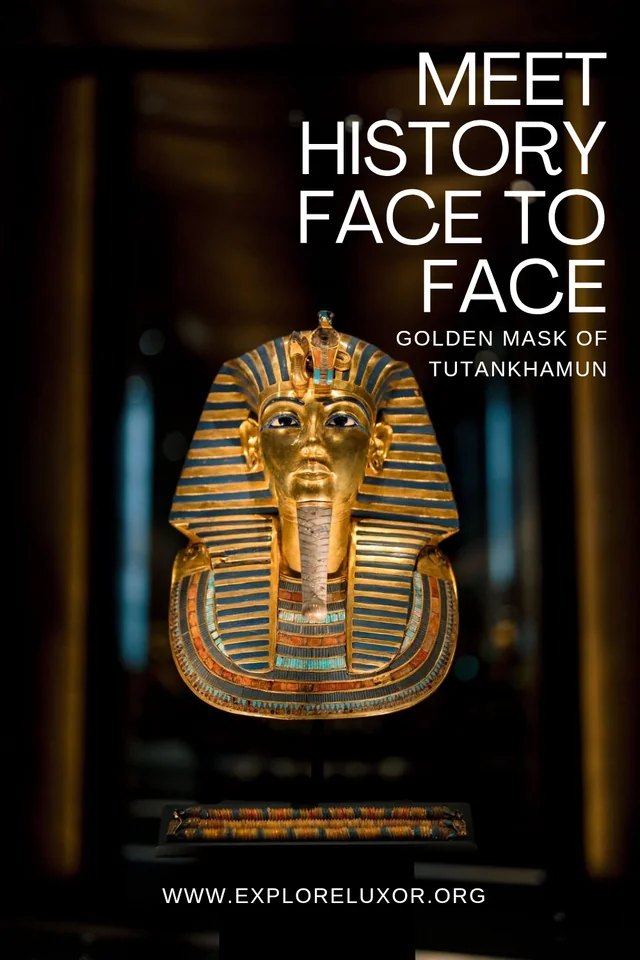
Tutankhamun as Egypt’s Eternal Ambassador
From the sands of Luxor to the bright halls of Cairo’s Grand Egyptian Museum, the story of Tutankhamun continues to inspire. His tomb shows Egypt’s ancient artistry, while the Grand Egyptian Museum highlights the country’s dedication to preserving and sharing its heritage with the world.
For travelers, exploring Tutankhamun’s legacy is more than just learning about history—it’s a chance to experience wonder. Whether standing in front of the boy king’s tomb or admiring his golden mask in Cairo, visitors see that Egypt’s past is not only preserved but also alive.
Got a Question?
F.A.Qs
The GEM houses all 5,398 objects from Tutankhamun’s tomb, including his golden mask, coffins, chariots, jewelry, and everyday items. It’s the first time the entire collection has been displayed together.
Although Tutankhamun ruled for only about a decade, his tomb’s discovery in 1922 provided unprecedented insight into ancient Egyptian life, art, and burial practices.
Yes, GEM offers interactive displays, educational zones, and multilingual guides, making it accessible and engaging for children and families.
Many travelers start in Cairo to see GEM and the pyramids, then fly to Luxor for the Valley of the Kings. A weeklong itinerary allows time to explore both destinations comfortably.
Yes, select artifacts have toured internationally in exhibitions, but the full collection is now permanently housed at the Grand Egyptian Museum in Cairo.
Did you know that
By purchasing through our links, you support us at no additional cost.
Thank you for your support. ♥️



